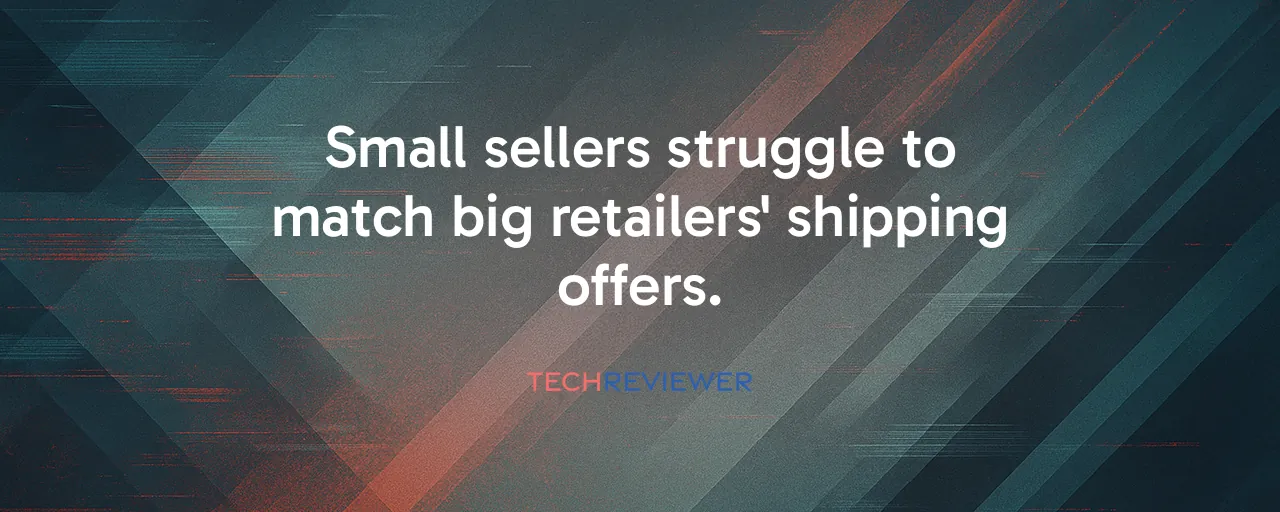The Free Delivery Revolution
In 2025, free delivery has become the heartbeat of online shopping. A recent DHL report reveals that 96 percent of retailers now identify their logistics offering as critical to securing sales, with 86 percent confirming that free delivery and returns directly improve conversion rates, lifting them by 20 to 30% when shoppers know they won't face extra fees. Amazon pioneered this standard with its Prime launch in 2005, leaving retailers scrambling to keep up. Online shoppers, especially younger ones, now expect free delivery as a given, and they're quick to abandon carts when costs pop up at checkout.
This shift has turned logistics into a make-or-break factor for e-commerce. Big players like Amazon and Walmart lean on massive scale to absorb shipping costs, while smaller retailers face a brutal choice: eat the expense or lose customers. The numbers are stark: 48% of shoppers ditch purchases over unexpected shipping fees, making free delivery a non-negotiable part of the game.
Amazon's Playbook vs. Small Sellers' Struggles
Amazon Prime, with over 200 million members, set the gold standard for free delivery. By charging an annual fee, Amazon turned shipping into a sunk cost for shoppers, driving loyalty and frequent purchases. Prime members spend more, and the company offsets its $76.7 billion annual shipping costs with massive sales volume. This model works for giants but leaves smaller players in the dust. Many Etsy sellers saw revenues drop 40% after platform algorithms began prioritizing listings with free shipping, forcing them to raise prices or absorb unsustainable costs.
Small businesses often lack the capital to invest in logistics tech or negotiate better carrier rates. While Amazon uses AI-powered warehouses and route optimization to shave costs, smaller retailers rely on third-party providers, facing margin compression as logistics eats up 53% of delivery expenses. The gap is widening, and without scale, small sellers risk being squeezed out.
Tech Innovations Reshaping Logistics
To survive the free delivery mandate, retailers are turning to technology. AI-driven warehouse systems now predict inventory needs and optimize picking routes, cutting labor costs by up to 30%. Micro-fulfillment centers in urban areas shrink last-mile distances, enabling same-day delivery without breaking the bank. Companies like Shopify and WooCommerce help smaller retailers integrate these tools, leveling the playing field slightly by offering access to multi-channel logistics platforms.
Electric vehicles and autonomous delivery robots are also gaining traction, driven by sustainability mandates and urban congestion. Pilot programs show these innovations could trim last-mile costs, which account for over half of total delivery expenses. However, the upfront investment is steep, and smaller retailers often can't afford the three-to-five year payoff horizon, leaving them dependent on partnerships or marketplace platforms.
The Hidden Costs of Free Shipping
Consumers win with free delivery, with 95% preferring free standard shipping over paying for faster options. But the environmental impact is real. Individual shipments increase vehicle miles and packaging waste, clashing with global goals like the European Union's 55% emissions cut by 2030. Retailers face pressure to adopt sustainable practices, like Amazon's Climate Pledge, but these add costs that smaller players struggle to bear.
There's also a fairness issue. Free delivery works best in dense urban areas, leaving rural shoppers with slower service despite paying the same prices. And while consumers love free returns, the reverse logistics process fuels waste, with 5% of deliveries failing at a cost of $17.78 per incident. These hidden costs raise questions about the long-term viability of free shipping for all but the biggest players.
Strategies for Staying Competitive
Retailers are getting creative to survive. Subscription models, like those used by subscription box services, generate predictable revenue to offset shipping costs. These services, now a $30 billion market, show shoppers will pay upfront for convenience. Regional retailers have found success with minimum order thresholds, boosting average order values by 25% when set thoughtfully. Partnerships with third-party logistics providers or shared delivery networks also help smaller businesses access better rates and infrastructure.
Looking ahead, out-of-home delivery options like locker systems are gaining ground, with 96% of large retailers seeing them as key to repeat business. Collaboration is another path forward. Shared fulfillment centers and industry-wide sustainability initiatives could help smaller retailers compete without going it alone. The future may hinge on balancing consumer expectations with smarter, more sustainable logistics.
